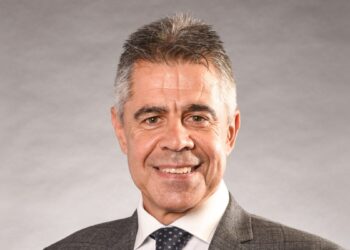Melanie Dunn, principal at Accurium, said if a strategy is not put in place for ECPI, or the wrong ones are implemented, SMSFs can incur some material tax, and timing is crucial.
Speaking at the SMSF Association Technical Summit, Dunn said when moving into retirement phase and commencing to pay a pension in an SMSF several things change.
“What do we have to start ticking off? We, of course, have to check the fund is eligible to commence to pay a pension. We need to understand the cash flow requirements coming out of the fund if the member is planning to take their minimums. And how might that impact the liquidity requirements of the fund?” she said.
“For a fund in accumulation phase, you probably have quite minimal cash or reserves from a liquidity perspective and that may need to change as we move into retirement. You have to decide if you need to sell assets to facilitate that liquidity in the fund, or whether you need to restructure the type of investments.”
Dunn said if the assets are to be sold, it may incur a capital gain, and it’s best not to rely on in-specie transactions because pension payments must be cashed.
“It’s important to take account of the liquidity requirement. You become eligible to claim ECPI, extremely valuable for SMSFs in the retirement phase, and of course, you have to get all the pension documentation right.”
In regard to restructuring investments for retirement in the context of the proposed Div 296 tax, Dunn said the strategies can be applied to a fund that has $5 million or $500,000.
“We know the tax is not going to apply until next financial year, but who has the option to avoid it?” she asked.
“If you’ve got $5 million in the fund, but you’re in accumulation phase, you haven’t met a condition of release, you can’t take that money out. If you’re in pension phase or a member who’s met the condition of release, obviously, in retirement phase, you have that capacity to withdraw the money from the fund if you want to.”
She continued that if a member is considering withdrawing significant amounts of money from the fund, they need to do that now, by either selling an asset or withdrawing an asset in-specie, but if that will create a capital gains tax event in the fund, you need to think about how and when you do it to maximise ECPI.
“How are these types of funds claiming ECPI? By definition, we’ve got members over $3 million to take money out. We’ve got members who are likely in retirement phase, so they are eligible to claim ECPI now for funds with over $3 million. Do they disregard small fund assets?” she said.
“What are the rules of disregarded small fund assets? Does a member have more than $1.6 million at the prior 30 June and have a retirement phase account? Yes. By definition, these funds caught by Divi 296 are likely to have disregarded small fund assets, which means you have to use the proportionate method for ECPI.”
She added this then requires thinking strategically about how to maximize ECPI, which subsequently means understanding the proportionate method calculation.
“Under the proportionate method, the timing of when a capital gains tax event occurs doesn’t matter, but the timing of any transactions, such as withdrawals that we make do impact the ECPI result,” she said.
“If the fund doesn’t have disregarded small fund assets, it’s different. A fund that doesn’t tick that box to have disregarded small fund assets is eligible to use the segregated method. The reason we like the segregated method is because capital gains will be tax-free if they’re segregated to a pension asset. So the timing of when capital gains tax events occur is important when we have a segregated fund.”



I’m not so black and white on your conclusions if I am interpreting your meaning. As always it depends. It depends on the age of the pensioner, how many members, life expectancy for fund matters. Secondly most of my clients with div296 risk are not asset/income free in non super and won’t be if they withdraw assets.
No fund will ever pay 30% as it’s asymptotic to 30% but will never get there. This is less than a corporate rate beneficiary of a DFT and less than $45k ATI under stage III. So to retain or not is not an open and shut case.
The biggest issue is probably death benefits tax. If you have a 296 problem you will have an ever growing accumulation account adding to taxable component. The irony of 296 is that the Commonwealth will likely collect less tax as many will withdraw and death benefits tax, which is a tax on capital not a tax on growth of capital, will likely be much more of a revenue loss than 296 generates.
All this complexity and waste of time, hurting the innocent, esp farmers, by a bureaucracy that refuses to listen to common sense of practitioners in the space. Madness.
Melanie
If you segregate that asset and sell it – I agree that there will be no or little tax.
But the whole idea is to reduce your Super balance due to Div 296 – hence after selling the asset you will want to reduce your accumulation account and not commute a pension and then withdraw
Secondly when you have a capital gain and if you sell the asset to an unrelated party – the selling price may increase the balance of the pension and may make the fund a disregarded fund forcing you to use the proportionate method. And if you have a Div 296 problem then most likely your fund is a disregarded fund
Hence, in my opinion, in theory what you mention may work but I doubt that it has any relevance in practice – I suggest that you do some scenarios to test my implications.
The answer to avoiding Div 296 tax is only one. If you are in Accumulation phase, bad luck. But if you are in Pension phase, sell pay your proportionate CGT and run. If you have multiple assets, pain of CGT will keep getting better as you keep withdrawing from your accumulation account
You can try voting in the opposition – but can they be trusted?